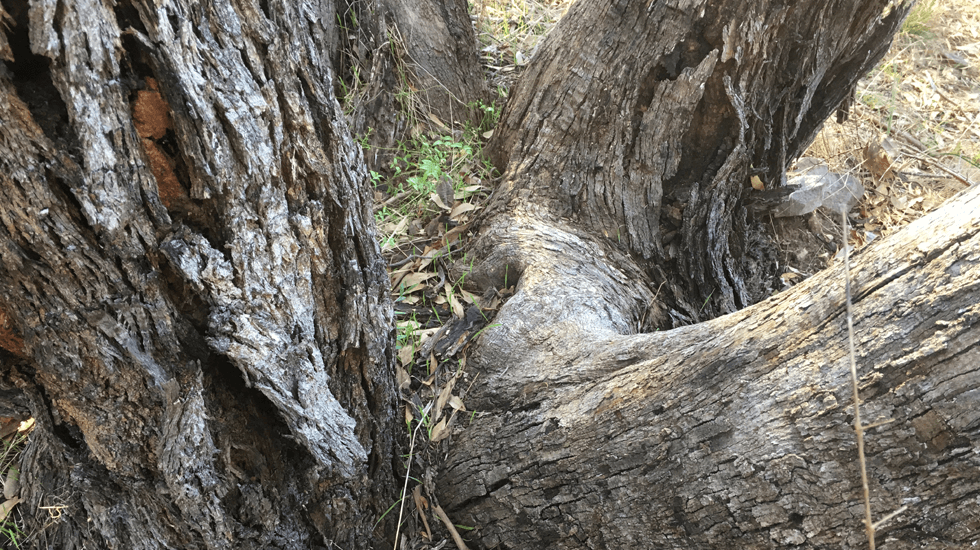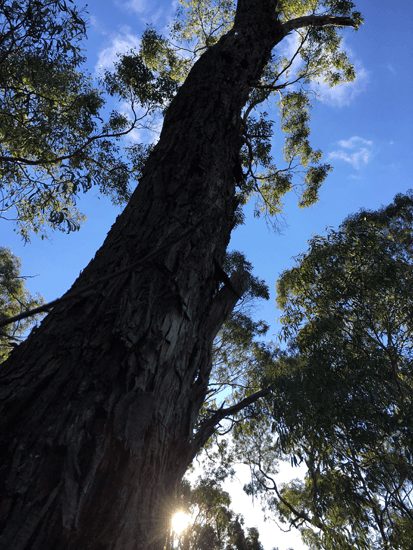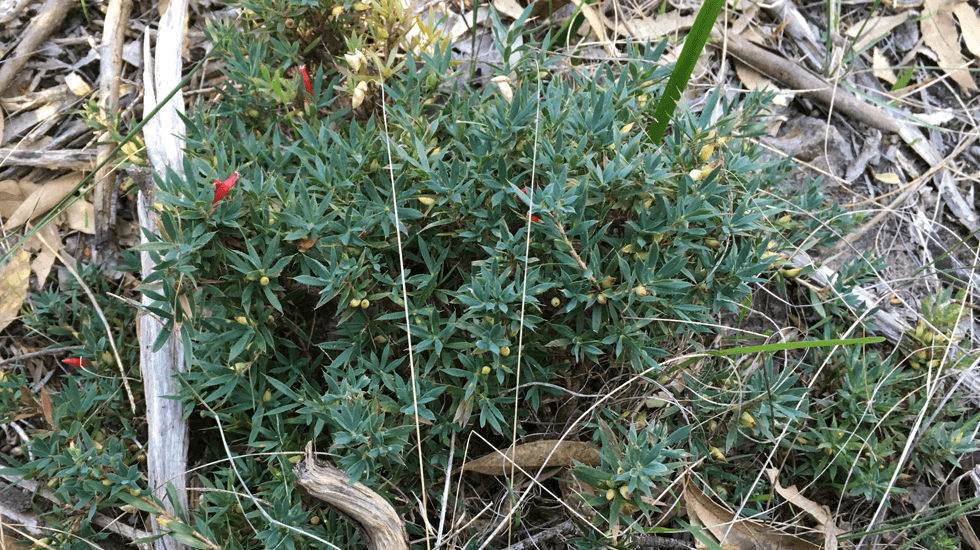VPOP visit’s Marianne’s remnant Grey Box Woodland
Posted on May 8, 2017 by Heather Whiting
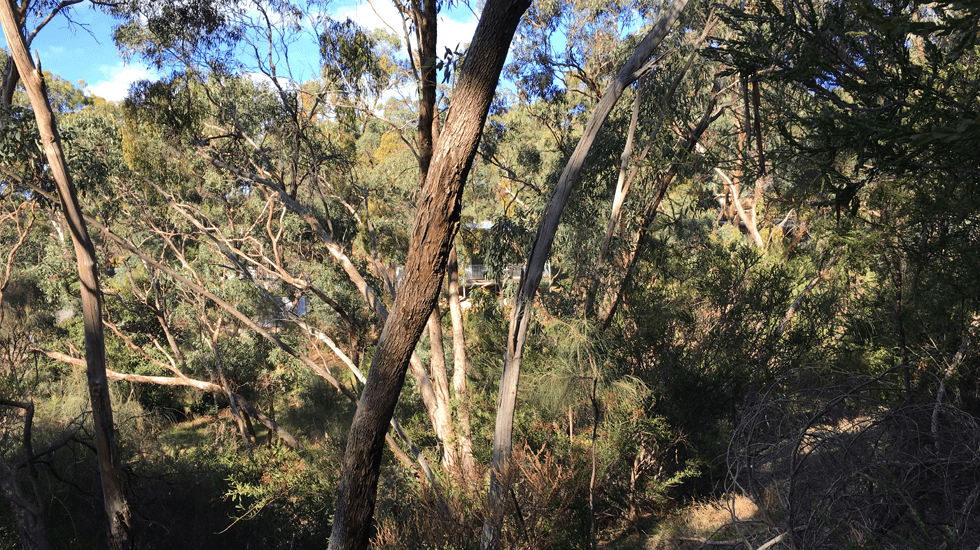
On a sunny afternoon on 8.5.17, VPOP members visited Marianne & John’s new Blackwood home among the the gum trees for lunch & a tour of their ‘backyard’ – a hillslope of remnant grassy woodland! Lunch was surprisingly lavish yet healthy, with many contributions from the group. 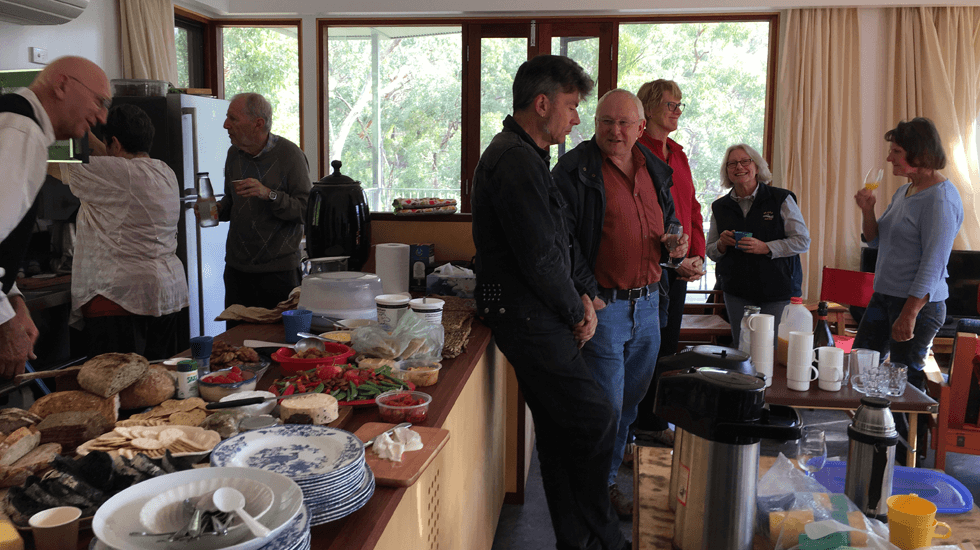 A definite standout though was Marianne and John’s three types of delicious homemade soups.
A definite standout though was Marianne and John’s three types of delicious homemade soups.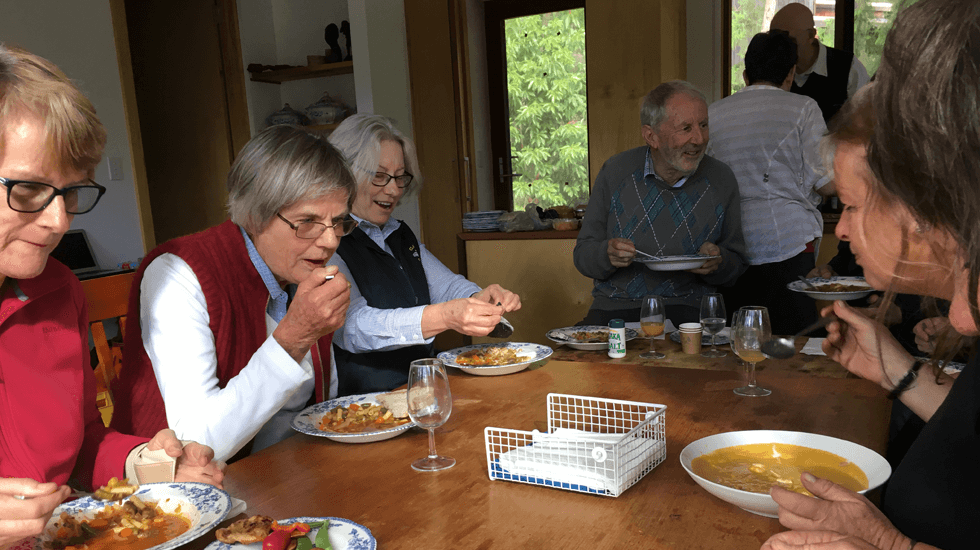 After a wonderful lunch, we sprayed our shoes with methylated spirits to avoid spreading any soil born nasties including Phytophora, and set forth down to & across the creek, then wandered up Marianne’s hill slope on the other side. There were so many sprouting Purple Garland Lilies (Calostemma purpureum) and unfurling Rock Ferns (Cheilanthes austrotenuifolia) it was hard to know where to put your feet. And most of the lilies were not even up yet! The birdsong was delightful as well, including the kookaburras.
After a wonderful lunch, we sprayed our shoes with methylated spirits to avoid spreading any soil born nasties including Phytophora, and set forth down to & across the creek, then wandered up Marianne’s hill slope on the other side. There were so many sprouting Purple Garland Lilies (Calostemma purpureum) and unfurling Rock Ferns (Cheilanthes austrotenuifolia) it was hard to know where to put your feet. And most of the lilies were not even up yet! The birdsong was delightful as well, including the kookaburras.
As Kate (a Botanic Gardens guide) explained, the Grey Box (Eucalyptus microcarpa) is one of a group of related gum trees with ‘Box’ in their common names, which are likely to be the names for them used by woodcutters in Colonial times. These trees all have rough bark all the way up their trunks right into the canopy, with only the very smallest branches at the top being smooth. This bark is a greyish colour, hence ‘Grey Box’.
At lunch, Phil and others speculated that being so close to early settlements, it was likely that most of the old Grey Box on site would have been ‘coppiced’ – being cut down for wood but left to grow multiple trunks, which could in turn be chopped for timber. Sure enough, as the photograph shows, there was evidence of this, with four large trunks growing around where the main trunk would have been cut down a long, long time ago. Notice the range of bark patterns on the ‘same tree’.
Looking up the trunk on the left (see photograph below), you can see how old these trees are. ( I rather like this photo, the way your eye first sees the sun then travels up the rough-barked trunk to the distant canopy).
The trunks also seem mostly to be very tall and straight before branching only at the top.
I don’t think many in the group realized that in 2010, Grey Box Grassy Woodland (GBGW) was declared a nationally threatened ecological community.
And Marianne and John have it in their ‘backyard’, including 60 species of remnant GBGW plants! It is weeded but otherwise left as natural as possible. They are to be applauded for preserving such an important biodiversity hotspot. A satellite view on Google Maps etc, shows their block is connected to the nearby Watiparinga Reserve, a National Trust site and large GBGW, increasing the importance of this remnant vegetation.
Very special indeed! Maybe VPOP could organise a couple more visits/weeding bees this year to help Marianne out?
I didn’t wander very far up the hill due to my health problems, but it was enough to later discover how typical was the GBGW understorey on the slope. Even in this picture of the group negotiating the slope and prickly wattles, I think I can see the shrub layer of Kangaroo Thorn (Acacia paradoxa, right), Golden Wattle (Acacia pynantha, the black trunk on the left), a Sheoak (Allocasuarina spp. in front of Cathryn & a Grey Box trunk) and Sweet Bursaria (Bursaria spinosa, far left).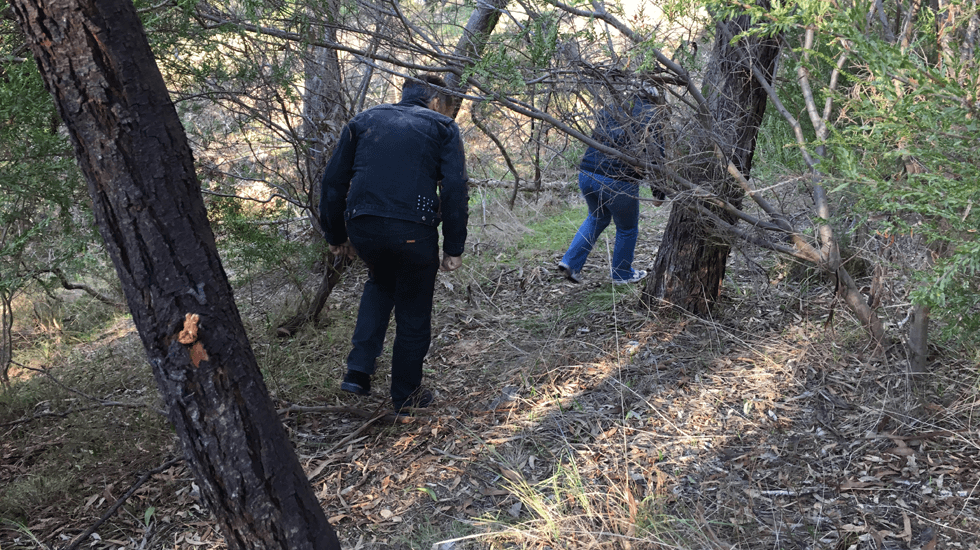
Of course there was also correct GBGW understorey as well with various grasses, Rapier-sedges (Lepidosperma carphoides? and all Lepidosperma are almost impossible to propogate!), many types of lilies (including the lovely Milkmaids which are quite tricky to grow) as well as small flowering plants like the Native Cranberry (Astroloma humifusum) shown below.
Another listed indicator of the health of a GBGW was the lichen present on the rocks. This photo was especially taken for Rose, who missed out on the trip due to illness.
Did you know? There are several Grey Box trees growing at Levi Park in Vale Park which would have sprouted in the 19th Century!! This is doubly surprising as their natural distribution was all south of Adelaide (except for these few trees) and also as almost all Grey Box have disappeared from the Adelaide Plains (probably only these trees and some at Heywood Park in Unley Park).
Category: Blog, Events, Feature Articles Tags: blackwood, Eucalyptus microcarpa, grassy woodland, grey box, remnant vegetation
 Vale Park Our Patch
Vale Park Our Patch